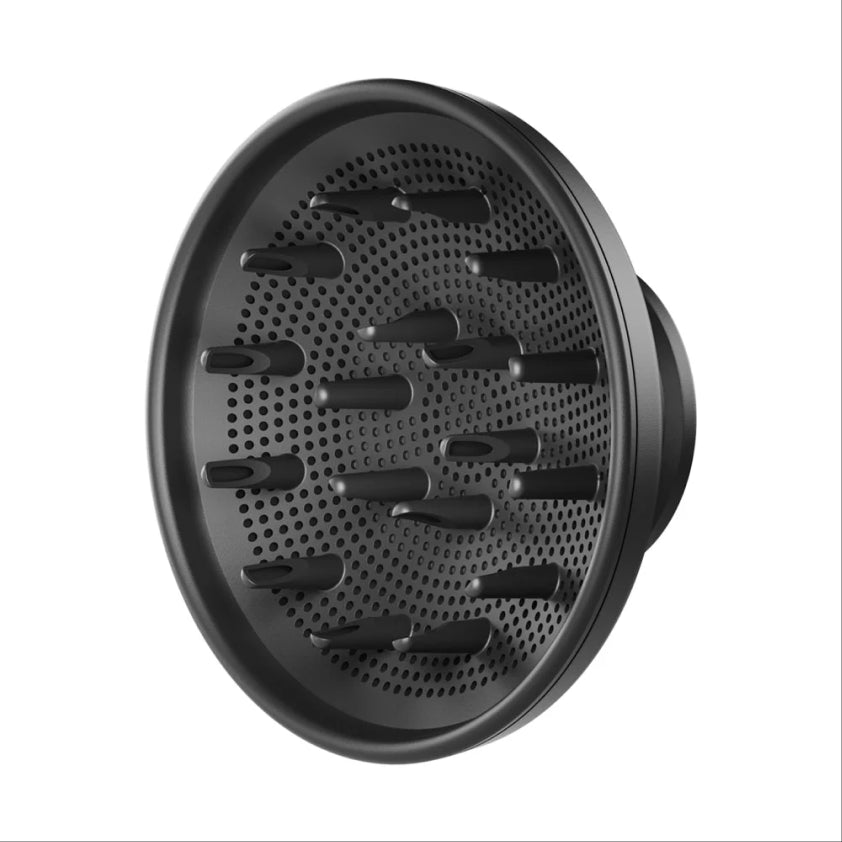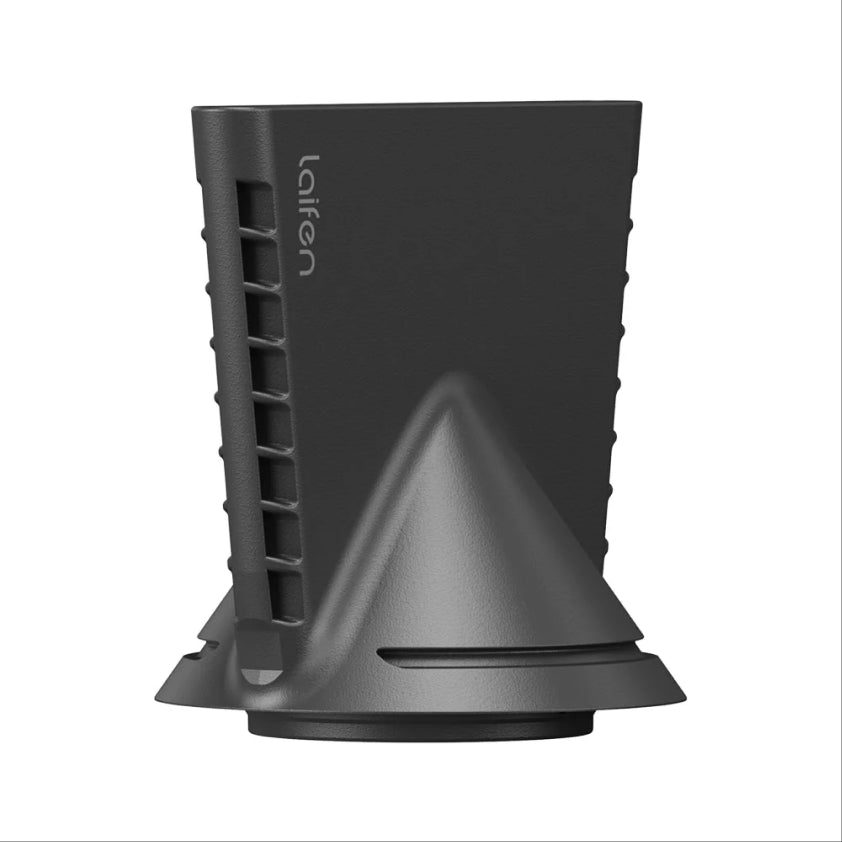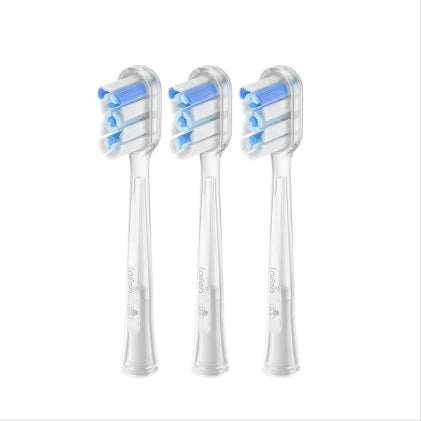
In this article
Hairdryers can reach temperatures between 30 to 100 degrees Celsius at different settings. To ensure that hair is dried gently, the right temperature is crucial. Many of us often wonder: how hot does a hair dryer actually get, and what impact does that heat have on our hair? In this article, you will learn about the best temperature for your hair and the importance of choosing the right hair dryer.
What is the Ideal Temperature for Drying Hair?
Hairdryers play an essential role in hair care. It's something you simply can't do without. When drying hair, it's important to understand the actual temperature of the hairdryer. Depending on the settings and model of the hair dryer, the temperature range can vary significantly. Using a hairdryer at too high a temperature can cause severe damage to your hair.

What is the Temperature of a Hair Dryer? - Typical Temperature Range
Hairdryer temperatures typically range from 50 to 100 degrees Celsius. Modern models are equipped with multiple temperature levels; the lowest settings are usually between 50 and 60 degrees Celsius. However, hairdryers on higher settings can exceed 100 degrees Celsius. Generally, it's recommended to use lower settings to avoid hair damage and frizz. Heat damage to hair is difficult to repair, so it's advisable to dry hair at the lowest possible temperature.
Different Settings and Models – How Hot Can a Hair Dryer Get?
How hot does a hairdryer get? This is a question you should ask yourself before purchasing a new hairdryer. There are various hairdryers available now, each with different settings. Hairdryers with adjustable settings can be tailored to your specific hair type. Some settings also cater to different styling preferences. Additionally, there are models with ionic technology. These ensure improved heat distribution, allowing for gentler hair drying. Different technologies used in hairdryers can also help reduce frizz and prevent hair damage, giving your hair a beautiful shine.
Ionic hairdryers, such as the Laifen Swift High-Speed Hairdryer, are very popular. This type of hairdryer releases negatively charged ions, which help break down water molecules in the hair more quickly. This means you can dry your hair faster even at lower temperatures. This is a significant advantage, especially if you have long, thick hair. In this case, the question of how hot the hairdryer gets becomes less relevant, as low temperatures are sufficient to dry and style the hair effectively.

Tourmaline and ceramic hairdryers are also popular. They generate infrared heat, which penetrates the hair more deeply, making drying more efficient. The surface of your hair is protected and doesn’t overheat, ensuring a safer drying experience.
How Hot is a Hair Dryer? - Factors Affecting Hair Dryer Temperature
Question: How does air in a hair dryer get hot? Let's answer that now. The temperature a hairdryer can reach depends on various factors. For instance, design plays a crucial role; it's key to how hot a hairdryer gets. Speed and heat settings also significantly impact temperature.
How Hot is a Hair Dryer? - Design Factors
One critical factor is the ionic technology in hairdryers. As mentioned earlier, ionic hairdryers produce negatively charged ions that break down water droplets in the hair. This can significantly reduce drying time. This technology also helps smooth the hair cuticle, reducing frizz and giving the hair more shine. The efficiency of this technology means you can dry your hair faster at lower temperatures, significantly reducing heat damage.

Ceramic and Tourmaline Heating Elements
These materials ensure even heat distribution. Hairdryers with ceramic and tourmaline use infrared heat, which penetrates the hair more deeply, further reducing drying time. In this case, the surface of the hair is not overheated. Tourmaline and ceramic help distribute heat more evenly and gently, making styling not only more effective but also safer.
How Hot is a Hair Dryer? - Speed and Heat Settings
The heat of a hairdryer also depends on its speed and heat settings. Here’s more information:
Speed Settings
Hairdryers typically offer two different speed levels: low and high. A higher fan speed increases the airflow, which can reduce drying time. However, if your hair is thicker or longer, selecting a higher speed setting might be more effective. For damaged or fine hair, a lower speed setting is advisable to minimise heat damage.
Heat Settings
A good hairdryer should have multiple temperature settings. This allows you to adjust the temperature according to your hair type and protect it from heat damage. When blow-drying, always ensure your hair doesn't overheat. If your hair is easily damaged or very fine, you might want to choose a lower heat setting. For example, if you have thick hair or hair that is difficult to dry, a higher setting may be more appropriate.
For styling, use the cool shot button at the end. This gives the hair the desired shine and helps set the hair structure.
How to Minimise Heat Damage: Most Recommended Methods
Many people ask themselves, "What is the temperature of a hairdryer?" To avoid heat damage, it's best to always use a lower temperature. However, there are other tips to prevent overheating when blow-drying.
Method 1: Apply Heat Protection
Before you start blow-drying, it's advisable to use heat protection. There are different heat protectant products available, such as sprays or creams. Using a heat protectant forms a protective barrier around your hair, keeping the heat away. As the name suggests, a heat protectant protects your hair from high temperatures.
Method 2: Choose the Right Temperature
Select a low temperature when blow-drying your hair, but make sure it still dries effectively. This can also help reduce damage. Always start with the lowest temperature setting, and increase it slightly if necessary.
Method 3: Keep the Hair Dryer Moving
This is crucial when it comes to how hot a hairdryer gets. Don't keep the dryer focused on one section of hair for too long. The hairdryer should always be moving. Avoid blow-drying any area for too long, as even heat distribution is important.

Method 3: Use the Right Drying Technique
Start by drying the roots first, using the hairdryer from top to bottom. Focus on the tips last. This can help reduce drying time and prevent the ends from overheating, which is an added benefit.
Method 4: Choose Quality
There are many hairdryers to choose from, but always opt for quality. Select a hairdryer with multiple settings, such as the Laifen Swift. A good hairdryer should have advanced technology, like ionic technology, which allows for gentler and, most importantly, faster drying. This type of hairdryer also distributes heat more evenly, reducing frizz and hair damage.
Method 5: Regularly Care for Your Hair
Pay attention to regular hair care. Use a deep conditioner once a week to provide your hair with ample moisture. Strengthen your hair with products or home remedies, and it will thank you.
How Hot Does a Hair Dryer Get? – FAQs
1. How hot does a hairdryer get?
A hairdryer’s temperature can range between 50 to 100 degrees Celsius. It's important to always use lower temperature settings when blow-drying to avoid damaging the hair.
2. How hot does a small hairdryer get?
A small hairdryer can reach temperatures of 60 to 80 degrees Celsius. Of course, this depends on the model and settings. However, these temperatures are sufficient for effective hair drying.
3. What technologies should a hairdryer have?
New models come equipped with various technologies. It’s best to choose a hair dryer with ionic technology. We definitely recommend Laifen hairdryers, which ensure short drying times and gentle drying.
4. What is the temperature of a regular hairdryer?
The temperature of a regular hairdryer can reach between 50 to 100 degrees Celsius, depending on its power and settings.
5. Can a hairdryer overheat?
Yes, a hairdryer can overheat if used continuously for long periods or if there is insufficient ventilation. This can not only cause severe damage to your hair but also damage the hairdryer itself.
Drying hair in a healthy and gentle way is very important. To ensure this, it’s crucial to understand: How hot does a hairdryer get?
































